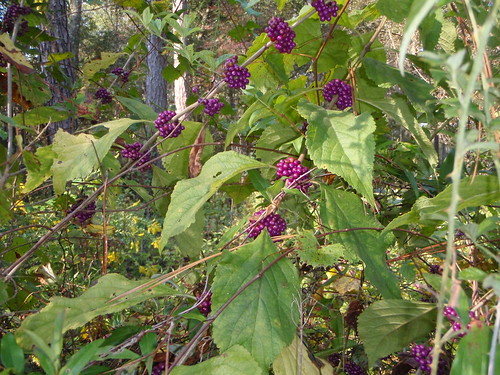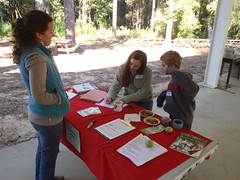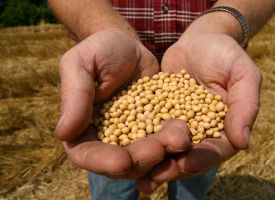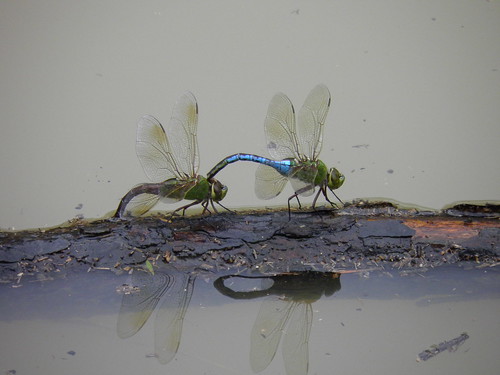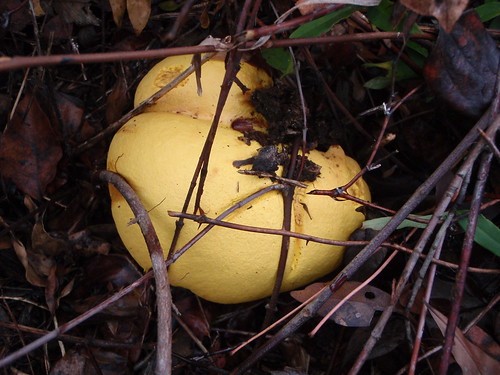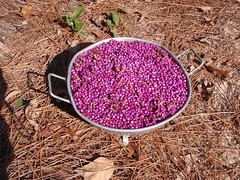 Those small violet berries in the woods: it’s beautyberry, and you can eat it.
(No, not pokeberry; those are larger, and the stems are purple.)
Beautyberry grows in clumps that you can pick like you’re milking
the bush.
Those small violet berries in the woods: it’s beautyberry, and you can eat it.
(No, not pokeberry; those are larger, and the stems are purple.)
Beautyberry grows in clumps that you can pick like you’re milking
the bush.
First, find some ripe ones:
Pick them and wash them:
And boil them:
To be continued….
Pictures of Callicarpa americana, Lowndes County, Georgia, 12 Oct 2010, as well as picking, cooking, by Gretchen Quarterman.
-jsq
